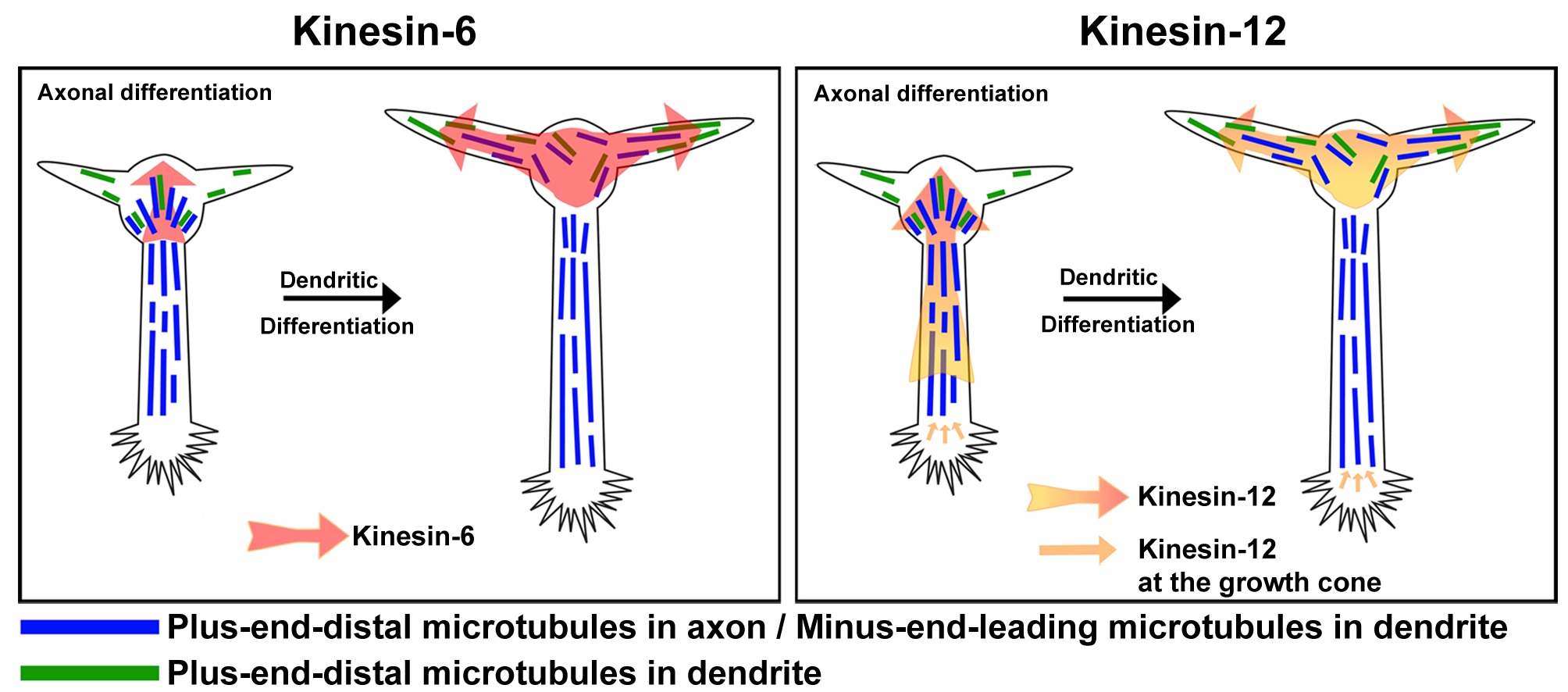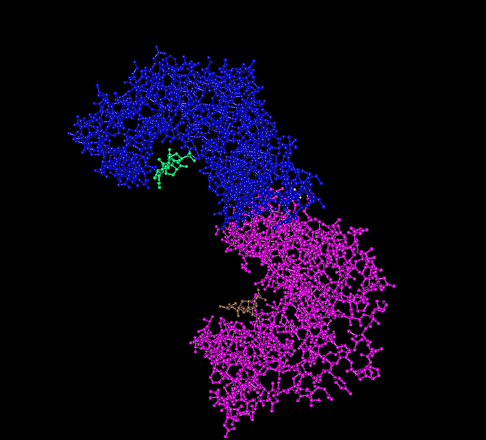|
KIF23
Kinesin-like protein KIF23 is a protein that in humans is encoded by the ''KIF23'' gene. Function In cell division KIF23 (also known as Kinesin-6, CHO1/MKLP1, C. elegans ZEN-4 and Drosophila Pavarotti) is a member of kinesin-like protein family. This family includes microtubule-dependent molecular motors that transport organelles within cells and move chromosomes during cell division. This protein has been shown to cross-bridge antiparallel microtubules and drive microtubule movement in vitro. Alternate splicing of this gene results in two transcript variants encoding two different isoforms, better known as CHO1, the larger isoform and MKLP1, the smaller isoform. KIF23 is a plus-end directed motor protein expressed in mitosis, involved in the formation of the cleavage furrow in late anaphase and in cytokinesis. KIF23 is part of the centralspindlin complex that includes PRC1, Aurora B and 14-3-3 which cluster together at the spindle midzone to enable anaphase in dividing ce ... [...More Info...] [...Related Items...] OR: [Wikipedia] [Google] [Baidu] |
Centralspindlin
Centralspindlin is a motor complex implicated in cell division. It contributes to virtually every step in cytokinesis,Glotzer, Michael"Cytokinesis: Centralspindlin Moonlights as a Membrane Anchor" ''Current Biology'', 18 February 2013 It is highly conserved in animal cells as a component of the spindle midzone and midbody.Glotzer, Michae" The 3Ms of central spindle assembly: microtubules, motors and MAPs" ''Nature'', January 2009 Centralspindlin is required for the assembly of the mitotic spindleNature Publishing Group"Research Highlights" ''Cell Migration Consortium'', 2009. Retrieved on 01 March 2014. as well as for microtubule bundling and anchoring of midbody microtubules to the plasma membrane. This complex is also implicated in tethering the spindle apparatus to the plasma membrane during cytokinesisLekomtsev et al ''Nature'', 13 December 2012 This interaction permits cleavage furrow ingression. In addition, centralspindlin's interaction with the ESCRT III allows for abscissio ... [...More Info...] [...Related Items...] OR: [Wikipedia] [Google] [Baidu] |
BIRC6
Baculoviral IAP repeat-containing protein 6 is a protein that in humans is encoded by the ''BIRC6'' gene. Function This gene encodes a protein with a BIR (baculoviral inhibition of apoptosis protein repeat) domain and a UBCc (ubiquitin-conjugating enzyme E2, catalytic) domain. This protein inhibits apoptosis by facilitating the degradation of apoptotic proteins by ubiquitination. Interactions BIRC6 has been shown to interact with KIF23. Diseases BIRC6 is implicated in leukemia, melanoma, breast cancer, lung cancer, colorectal cancer, and other cancers (see the Atlas of Genetics and Cytogenetics in Oncology and Haematology The Atlas of Genetics and Cytogenetics in Oncology and Haematology, created in 1997 by Jean-Loup Huret (with bioinformatics by Philippe Dessen) is a collection of resources on genes, Chromosome abnormality, chromosomes anomalies, leukemias, solid ...). References External links * PDBe-KBprovides an overview of all the structure information avail ... [...More Info...] [...Related Items...] OR: [Wikipedia] [Google] [Baidu] |
ARF3
ADP-ribosylation factor 3 is a protein that in humans is encoded by the ''ARF3'' gene. Function ADP-ribosylation factor 3 (ARF3) is a member of the human ARF gene family. These genes encode small guanine nucleotide-binding proteins that stimulate the ADP-ribosyltransferase activity of cholera toxin and play a role in vesicular trafficking and as activators of phospholipase D. The gene products include 6 ARF proteins and 11 ARF-like proteins and constitute 1 family of the RAS superfamily. The ARF proteins are categorized as class I (ARF1, ARF2, and ARF3), class II (ARF4 and ARF5) and class III (ARF6) and members of each class share a common gene organization. The ARF3 gene contains five exons and four introns. Interactions ARF3 has been shown to interact with: * ARFIP1, * ARFIP2, * GGA1, * GGA3, and * KIF23 Kinesin-like protein KIF23 is a protein that in humans is encoded by the ''KIF23'' gene. Function In cell division KIF23 (also known as Kinesin-6, CHO1/MKLP ... [...More Info...] [...Related Items...] OR: [Wikipedia] [Google] [Baidu] |
PRC1
Protein Regulator of cytokinesis 1 (PRC1) is a protein that in humans is encoded by the ''PRC1'' gene and is involved in cytokinesis. Function PRC1 protein is expressed at relatively high levels during S and G2/M phases of the cell cycle before dropping dramatically after mitotic exit and entrance into G1 phase. PRC1 is located in the nucleus during interphase, becomes associated with the mitotic spindle in a highly dynamic manner during anaphase, and localizes to the cell midbody during cytokinesis. PRC1 was first identified in 1998 using an ''in vitro'' phosphorylation screening method and shown to be a substrate of several cyclin-dependent kinases (CDKs). Correspondingly, ablation of PRC1 has been shown to disrupt spindle midzone assembly in mammalian systems. At least three alternatively spliced transcript variants encoding distinct isoforms of PRC1 have been observed. Additionally, PRC1 has sequence homology with Ase1 in yeasts, SPD-1 (spindle defective 1) in C. elegans, Fe ... [...More Info...] [...Related Items...] OR: [Wikipedia] [Google] [Baidu] |
Aurora B Kinase
Aurora kinase B is a protein that functions in the attachment of the mitotic spindle to the centromere. Function Chromosomal segregation during mitosis as well as meiosis is regulated by kinases and phosphatases. The Aurora kinases associate with microtubules during chromosome movement and segregation. Aurora kinase B localizes to microtubules near kinetochores, specifically to the specialized microtubules called K-fibers, and Aurora kinase A (MIM 603072) localizes to centrosomes (Lampson et al., 2004).[supplied by OMIM] In cancerous cells, over-expression of these enzymes causes unequal distribution of genetic information, creating aneuploidy, aneuploid cells, a hallmark of cancer. Discovery In 1998, Aurora kinase B was identified in humans by a polymerase chain reaction screen for kinases that are overexpressed in cancers. In the same year, rat Aurora kinase B was identified in a screen designed to find kinases that altered S. cerevisiae proliferation when overexpressed. E ... [...More Info...] [...Related Items...] OR: [Wikipedia] [Google] [Baidu] |
Dendrite
Dendrites (from Greek δένδρον ''déndron'', "tree"), also dendrons, are branched protoplasmic extensions of a nerve cell that propagate the electrochemical stimulation received from other neural cells to the cell body, or soma, of the neuron from which the dendrites project. Electrical stimulation is transmitted onto dendrites by upstream neurons (usually via their axons) via synapses which are located at various points throughout the dendritic tree. Dendrites play a critical role in integrating these synaptic inputs and in determining the extent to which action potentials are produced by the neuron. Dendritic arborization, also known as dendritic branching, is a multi-step biological process by which neurons form new dendritic trees and branches to create new synapses. The morphology of dendrites such as branch density and grouping patterns are highly correlated to the function of the neuron. Malformation of dendrites is also tightly correlated to impaired nervous syste ... [...More Info...] [...Related Items...] OR: [Wikipedia] [Google] [Baidu] |
Spindle Apparatus
In cell biology, the spindle apparatus refers to the cytoskeletal structure of eukaryotic cells that forms during cell division to separate sister chromatids between daughter cells. It is referred to as the mitotic spindle during mitosis, a process that produces genetically identical daughter cells, or the meiotic spindle during meiosis, a process that produces gametes with half the number of chromosomes of the parent cell. Besides chromosomes, the spindle apparatus is composed of hundreds of proteins. Microtubules comprise the most abundant components of the machinery. Spindle structure Attachment of microtubules to chromosomes is mediated by kinetochores, which actively monitor spindle formation and prevent premature anaphase onset. Microtubule polymerization and depolymerization dynamic drive chromosome congression. Depolymerization of microtubules generates tension at kinetochores; bipolar attachment of sister kinetochores to microtubules emanating from opposite cell pol ... [...More Info...] [...Related Items...] OR: [Wikipedia] [Google] [Baidu] |
14-3-3
14-3-3 proteins are a family of conserved regulatory molecules that are expressed in all eukaryotic cells. 14-3-3 proteins have the ability to bind a multitude of functionally diverse signaling proteins, including kinases, phosphatases, and transmembrane receptors. More than 200 signaling proteins have been reported as 14-3-3 ligands. Elevated amounts of 14-3-3 proteins in cerebrospinal fluid may be a sign of Creutzfeldt–Jakob disease. Properties Seven genes encode seven distinct 14-3-3 proteins in most mammals (See ''Human genes'' below) and 13-15 genes in many higher plants, though typically in fungi they are present only in pairs. Protists have at least one. Eukaryotes can tolerate the loss of a single 14-3-3 gene if multiple genes are expressed, but deletion of all 14-3-3s (as experimentally determined in yeast) results in death. 14-3-3 proteins are structurally similar to the Tetratrico Peptide Repeat (TPR) superfamily, which generally have 9 or 10 alpha helices, and ... [...More Info...] [...Related Items...] OR: [Wikipedia] [Google] [Baidu] |
Aurora B
An aurora (plural: auroras or aurorae), also commonly known as the polar lights, is a natural light display in Earth's sky, predominantly seen in high-latitude regions (around the Arctic and Antarctic). Auroras display dynamic patterns of brilliant lights that appear as curtains, rays, spirals, or dynamic flickers covering the entire sky. Auroras are the result of disturbances in the magnetosphere caused by the solar wind. Major disturbances result from enhancements in the speed of the solar wind from coronal holes and coronal mass ejections. These disturbances alter the trajectories of charged particles in the magnetospheric plasma. These particles, mainly electrons and protons, precipitate into the upper atmosphere (thermosphere/exosphere). The resulting ionization and excitation of atmospheric constituents emit light of varying colour and complexity. The form of the aurora, occurring within bands around both polar regions, is also dependent on the amount of acceleration imp ... [...More Info...] [...Related Items...] OR: [Wikipedia] [Google] [Baidu] |
Protein
Proteins are large biomolecules and macromolecules that comprise one or more long chains of amino acid residues. Proteins perform a vast array of functions within organisms, including catalysing metabolic reactions, DNA replication, responding to stimuli, providing structure to cells and organisms, and transporting molecules from one location to another. Proteins differ from one another primarily in their sequence of amino acids, which is dictated by the nucleotide sequence of their genes, and which usually results in protein folding into a specific 3D structure that determines its activity. A linear chain of amino acid residues is called a polypeptide. A protein contains at least one long polypeptide. Short polypeptides, containing less than 20–30 residues, are rarely considered to be proteins and are commonly called peptides. The individual amino acid residues are bonded together by peptide bonds and adjacent amino acid residues. The sequence of amino acid residue ... [...More Info...] [...Related Items...] OR: [Wikipedia] [Google] [Baidu] |






